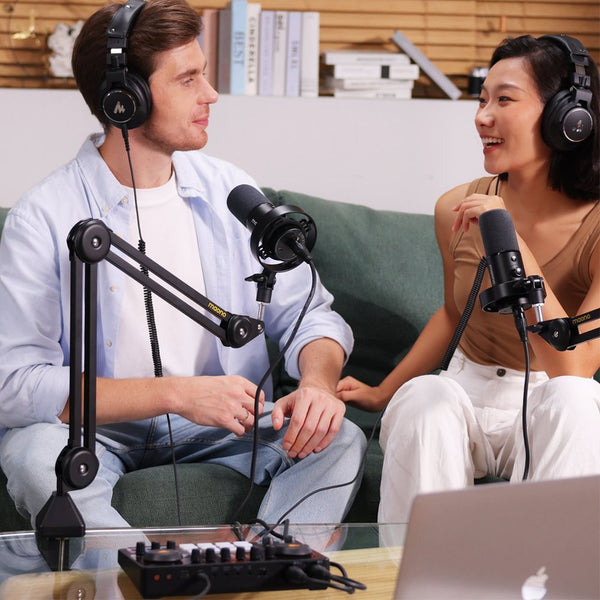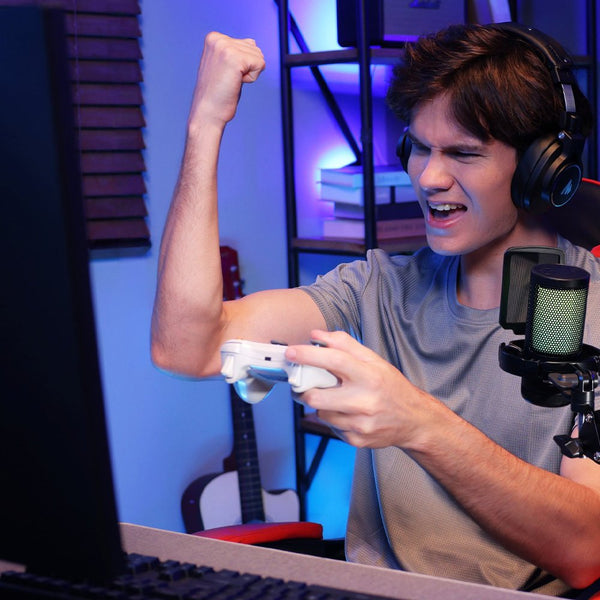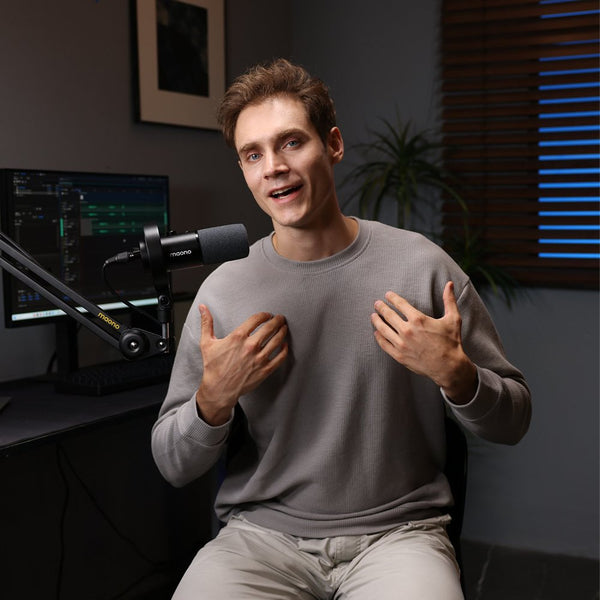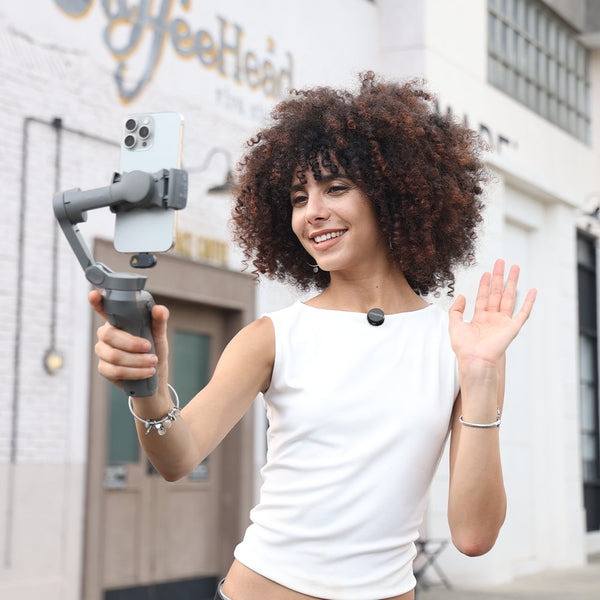Are you having second thoughts about your weight loss journey? Do you think you might be making mistakes, which is why you're not seeing results from your efforts to lose weight?
If you're starting to lose hope, think again.
Experts say to trust the process, and if you suspect you're making unintentional mistakes on your path to weight loss, keep reading. Whether you're tracking your fitness or sharing your progress using a wireless microphone on a podcast, it’s important to understand what might be holding you back. Let’s explore the common errors that may be preventing you from losing weight—and learn how to correct them as soon as possible.
You eat salads, drink smoothies, skip dessert—and yet the number on the scale hasn’t budged. If you’ve ever asked, “Why am I not losing weight even though I eat healthy?”—you’re not alone. Many people struggle with weight loss even when they believe they’re doing everything right. The truth is, fat loss is influenced by more than just eating what seems healthy. It’s about the full picture—habits, metabolism, stress, exercise, and even how you share and stay accountable through tools like fitness podcasts.
In this article, we’ll dive into common diet mistakes, frequently asked questions about fat loss, and how to create motivating, clear fitness content using a podcast wireless microphone. Whether you're trying to improve your personal fitness journey or hoping to inspire others with your voice, this guide will help you stay on track and amplify your message.

Common Diet Mistakes That Sabotage Your Weight Loss Goals
1. Not Tracking Your Food and Calorie Intake
You might think you’re eating healthy—but are you tracking how much? Even nutritious foods can lead to weight gain if you’re eating them in large quantities. Calories still matter. Use apps like MyFitnessPal to log your meals, so you have a clear view of your intake versus your output.
2. Continuous Eating of Processed Foods
"Healthy" processed foods—like protein bars, veggie chips, or frozen diet meals—can still be high in sodium, sugar, and preservatives. These additives can cause inflammation, bloating, and even hinder fat burning. Stick to whole foods—lean proteins, leafy greens, fruits, nuts, and complex carbs.
3. Drinking Sugary or Carbonated Drinks
Many people forget to count what they drink. One soda or sugary iced coffee can pack 200–300 calories or more. Even diet drinks with artificial sweeteners may trigger cravings. Water, herbal tea, and black coffee are better alternatives when aiming for fat loss.
4. You're Not Sleeping Enough
Lack of sleep disrupts hormones like leptin and ghrelin, which control hunger and satiety. Chronic sleep deprivation can also raise cortisol levels, promoting fat storage—especially around the abdomen. Aim for 7–9 hours of restful sleep per night.
5. You Have a Medical Condition Called PCOS
Polycystic Ovary Syndrome (PCOS) affects hormone levels and metabolism. Women with PCOS often struggle with insulin resistance, making weight loss more difficult. If you suspect a condition is affecting your results, consult a healthcare provider for proper diagnosis and treatment options.
Frequently Asked Questions on Weight Loss:
Can eating too little actually stop weight loss?
Yes. Severely restricting calories can slow your metabolism and trigger a starvation response. Your body starts conserving energy, making it harder to lose weight. Always ensure you're eating at least your Basal Metabolic Rate (BMR) and aim for a moderate calorie deficit of 500–750 calories per day.
How many calories should I eat to lose weight safely?
Calorie needs vary by age, weight, activity level, and goals. However, a good starting point is calculating your Total Daily Energy Expenditure (TDEE) and reducing it by about 10–20%. For most people, 1,200–1,800 calories per day is a safe range—but it’s best to personalize based on your unique profile.
Does late-night eating really affect weight loss?
It depends more on what and how much you eat, rather than the time. That said, late-night snacking often leads to mindless eating of high-calorie, low-nutrient foods. If you're staying within your calorie goals, the timing is less important than the content and consistency.
Are cheat meals slowing down my progress?
Occasional cheat meals can boost metabolism and give you a psychological break—but frequent or uncontrolled cheat meals can negate your weekly calorie deficit. If you indulge, make it mindful and return to your plan immediately after.
How important is sleep when trying to lose weight?
Very important. Poor sleep quality impacts hormone regulation, cravings, energy levels, and workout performance. Improving sleep hygiene should be a core part of your weight-loss strategy.
Is cardio or weight training better for fat loss?
Both are effective—but weight training helps preserve muscle, which boosts metabolism. A mix of strength training and cardio (like HIIT or walking) offers the best long-term fat loss results.
Can stress be the reason I’m not losing weight?
Absolutely. Chronic stress raises cortisol, which promotes fat retention and increases hunger. Manage stress with exercise, sleep, meditation, or journaling. Even laughing helps lower cortisol!
On Podcasting Fitness Content with a Microphone:
Creating a podcast to share your fitness journey or give advice is a great way to build community and stay accountable. But how you deliver your message matters. The right microphone and technique can turn a bland topic into a motivating, clear, and professional-sounding episode.
How do I make fitness topics sound motivating on a podcast?
Use enthusiastic, conversational energy when speaking. Smile while you talk—it changes your tone. Share personal stories or client wins to connect emotionally. Use background music or sound effects to highlight key moments (sparingly).
Should I record fitness podcasts standing or sitting for best mic use?
Standing helps with breath control, posture, and energy—great for motivational topics. However, sitting works too, especially with a good mic and pop filter. Choose what’s most comfortable for longer recordings, but ensure your mic stays at mouth level.
Using a Podcast Mic to Share Fitness Advice with Clarity
Enunciate clearly, use a pop filter to reduce plosives (like “P” or “B” sounds), and record in a quiet, echo-free room. Avoid tapping your desk or moving the mic while recording. Practice reading aloud to improve flow and reduce filler words like "um" or "like."
Do I need a wireless microphone for airing my health podcast?
Yes—wireless microphones give you freedom of movement, especially useful for fitness influencers recording walking podcasts or video-based workouts. If you're demonstrating routines, standing interviews, or mobile content, a wireless mic setup is ideal.
Looking for a solid recommendation? The best wireless microphone for PC users who are also fitness podcasters is the Maono Wave T5—compact, versatile, and highly rated for audio clarity.
What’s the best podcast mic for recording fitness tips at home?
We recommend the Maono Wave T5 Wireless Microphone
This dual-channel, plug-and-play mic is ideal for creators who want freedom and clarity. It features:
-
Crystal-clear audio for voice and movement
-
Wireless range up to 300m
-
USB-C and lightning connectivity (ideal for those searching for an Amazon lapel mic for iPhone)
-
Low-latency transmission for syncing video content
-
Portable charging case with long battery life
It also works flawlessly as an iPhone collar mic and is great for live streaming or interviews via apps like Zoom. If you're in need of a lapel mic for Zoom sessions or remote coaching calls, this mic checks every box. Plus, its lapel mic receiver and transmitter system ensures you're always heard, no matter where you’re recording from.

Conclusion
Weight loss is not just about eating salads and hitting the gym—it’s a holistic journey that requires consistency, sleep, stress management, and a solid understanding of your body. Avoiding common mistakes like overeating “healthy” foods, underestimating sleep, or failing to track intake can make a big difference in your progress.
If you’re passionate about fitness and want to help others along the way, podcasting can be an incredible tool to share insights, keep yourself motivated, and build a like-minded community. With the right microphone, like the Maono Wave T5, and clear communication, your message can resonate and inspire far beyond the walls of the gym.
Whether you're struggling with weight loss or starting a fitness podcast, clarity, consistency, and the right tools are key. Stay informed, stay empowered, and keep lifting others as you lift yourself.



